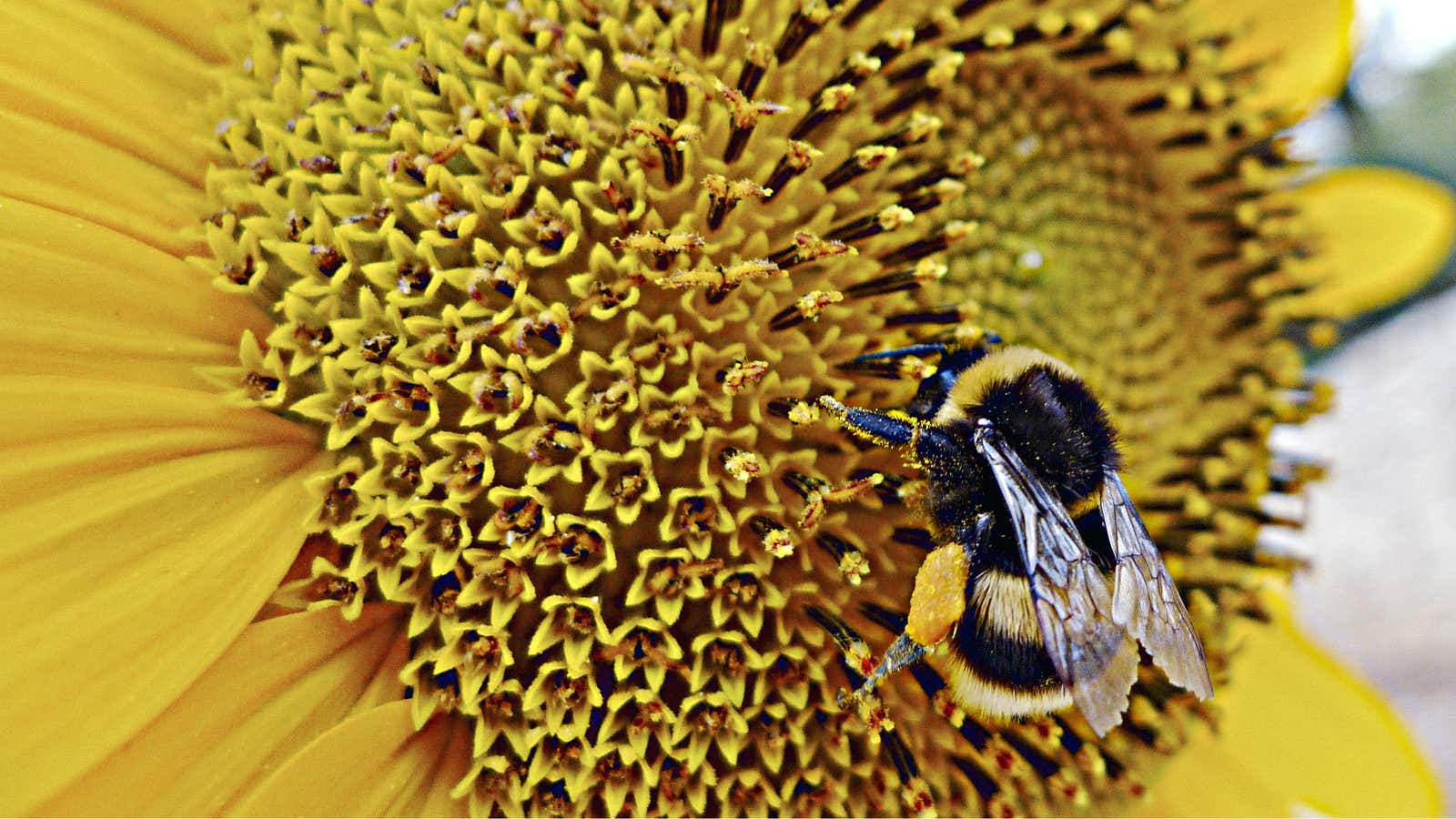We’ve spent the past couple of years worrying about the honeybee, but it looks like the bumblebee is in trouble as well.
A recent study by researchers from the University of Ottawa and the University of Calgary published in the journal Science found that as climate change has warmed the planet, bumblebees’ habitats are shrinking. And unlike other insects that have thrived in a warmer climate, or migrated to a more suitable climate, these bees are just dying off.
“Bumblebees species are generally failing to take advantage of warming conditions,” said lead author Jeremy Kerr, an ecologist from the University of Ottawa, in a press conference. “As a result, their distributions have run up against a kind of wall.”
To reach this conclusion, Kerr’s team gathered about 423,000 instances of 67 bumblebee species Europe and North America from 1901 to 2010. They compared the bees’ northern and southern limits, their average elevation, and the temperatures they could withstand. They found that in the years after 1975, certain species of bumblebees in both continents had stopped inhabiting their southern limits, and they hadn’t moved farther north, despite the fact that their northern limits have warmed 2.5°C (about 4.5°F). Researchers aren’t entirely sure why.
Kerr compared the situation of bumblebees to a vice. He explained that as temperatures have warmed since 1975, many species of bumblebees are being forced into smaller and smaller habitats. On the southern ends of their habitat in Europe and North America, bumblebees are losing about 9 km per year (5.6 miles), and have already lost 300 km (about 186 miles).
Despite the threats that land development and pesticides (including neonicotinoids) pose to bumblebees, the researchers noted that these factors did not account for the converging habitat. Instead, this change is directly linked to human-induced climate change. “Something that’s important to note that the climate response we have observed…began before neonicotinoids were in significant use,” he said.
Alana Pindar, an ecologist at the Nature Conservancy of Canada, explained that unlike butterflies or other insects with tropical origins, bumblebees evolved from a cooler climate. “Bumblebees originated perhaps some 35 million years ago in cool to temperate environments,” she explained. “Most other species that have often shown positive responses to climate change, like butterflies, evolved in the tropics.”
According to Pindar, bumblebees pollinate more fruits, vegetables, and flowers than the European honeybee. Though this study didn’t examine crop loss yet from the bees’ disappearance, the researchers warned that this change is likely coming, and could be costly.
Aside from mitigating climate change itself, there may be other ways we can help conserve bumblebees. Kerr postulated assisted migration—the idea of people literally moving bumblebees to new habitat—as a solution worth considering. Additionally, instead of concrete, pebbles, or even manicured lawns, Laurence Packer, an ecologist from York University and co-author of the study, suggested that diverse gardens can provide extra habitat for bees. “People should be encouraged to plant simpler flowers, preferably native ones, but ones where the resources [the nectar] are out there and easy for the bees to accept.”
